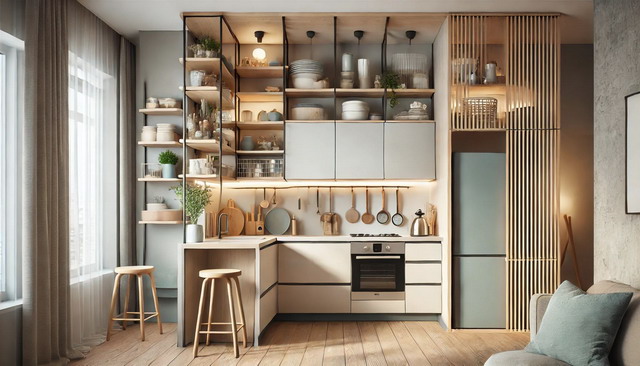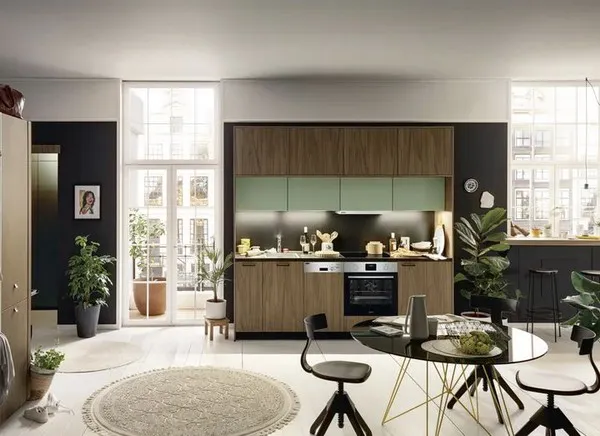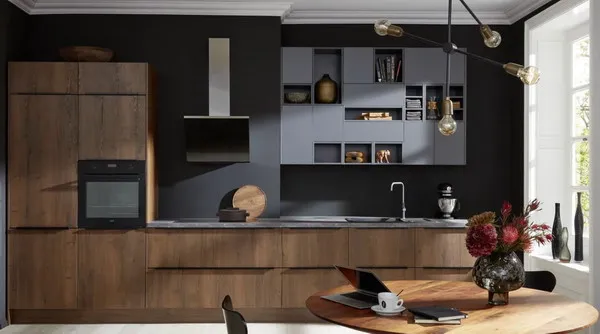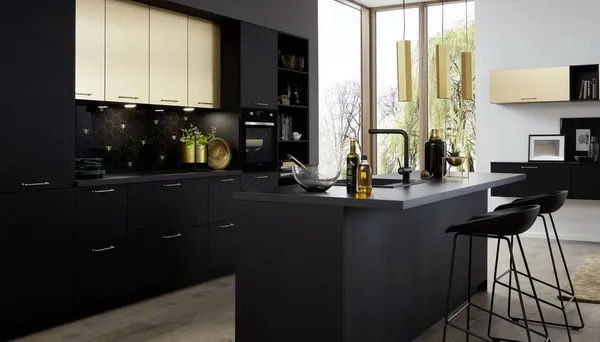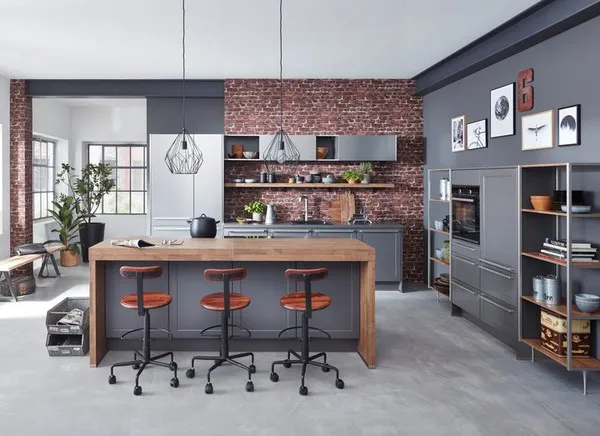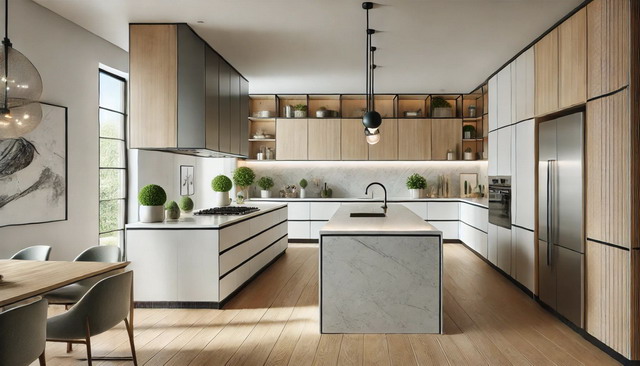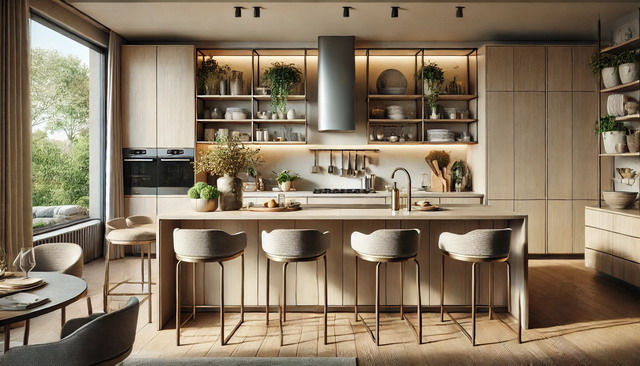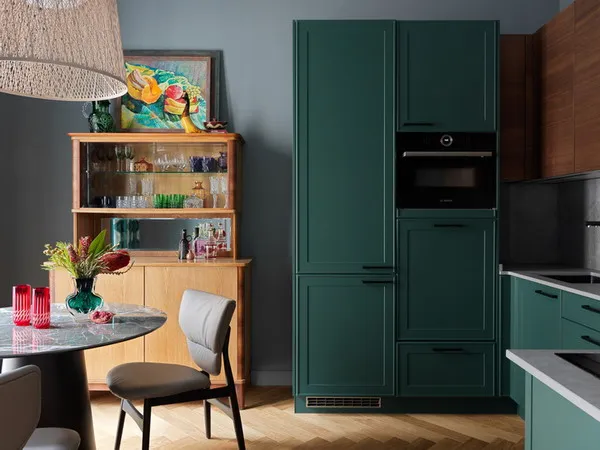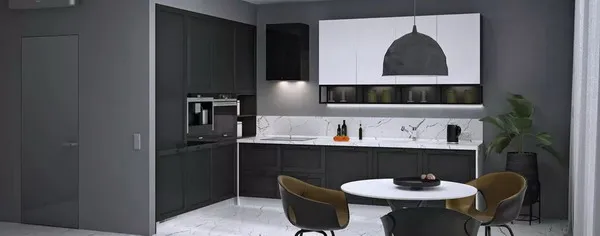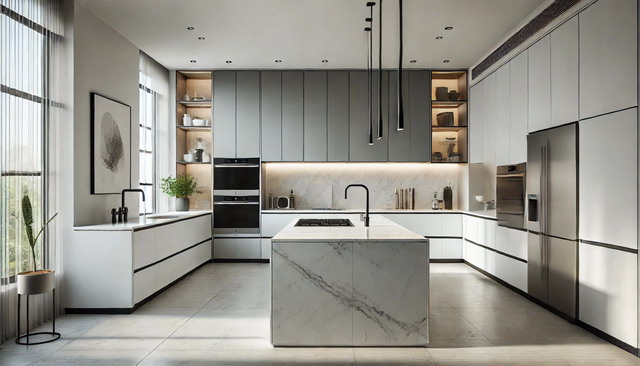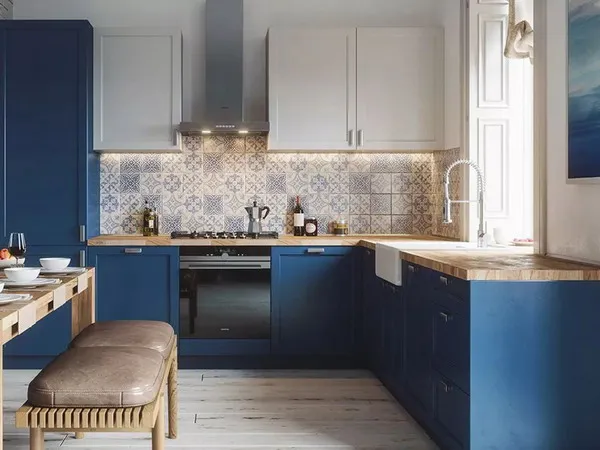Top 10 Small Kitchen Trends 2026: Transform Your Space with These Innovative Ideas
Last Updated on August 13, 2024 by Mutiara
As 2026 approaches, small kitchen designs are evolving to meet the needs of modern lifestyles. Innovative trends are focusing on maximizing space, enhancing functionality, and incorporating smart technology. Homeowners are increasingly looking for stylish yet practical solutions that can turn compact areas into efficient culinary hubs.
Sustainability is also making a mark this year, with eco-friendly materials and energy-efficient appliances gaining popularity. In addition, color palettes are shifting towards warmer tones, bringing a cozy ambience even to the smallest kitchens. These trends reflect a growing desire for personalization and comfort in home cooking spaces.
Exploring the top small kitchen trends for 2026 reveals how design can transform limited areas into stylish environments. Whether through multifunctional furniture or cutting-edge gadgets, these updates can greatly enhance the cooking experience. Embracing these trends can inspire creativity and practicality in kitchen design.
Maximizing Space Efficiency
Efficient use of space is crucial in small kitchens. Innovative storage solutions and multipurpose furniture designs are key strategies to enhance functionality without sacrificing style.
Innovative Storage Solutions
Creative storage options can transform a compact kitchen. Utilizing vertical space is essential; tall cabinets and shelves maximize storage while keeping items accessible.
Examples include:
- Wall-Mounted Racks: These allow for hanging pots, pans, and utensils, freeing up drawer space.
- Pull-Out Shelves: They provide easy access to stored items at the back of cabinets.
- Nesting Containers: These optimize space and reduce clutter.
Incorporating drawers under countertops can also capitalize on often wasted areas. Implementing organizers inside cabinets keeps items sorted and easy to find. Overall, tailored storage solutions make a significant impact in small kitchen efficiency.
Multipurpose Furniture Designs
Multipurpose furniture enhances functionality in a small kitchen by combining uses in limited spaces. Bar carts, for instance, serve as mobile storage for kitchen tools and can double as a serving area.
Key designs include:
- Foldable Tables: These can be expanded when needed and tucked away afterward.
- Kitchen Islands with Seating: They function as extra counter space and dining areas.
- Multi-Storage Benches: These can store kitchen items while providing additional seating.
Such designs allow for flexibility and adaptability, essential in small areas. Choosing stylish yet functional pieces helps maintain an inviting atmosphere while ensuring that every item serves a purpose.
Smart Kitchen Technology
Smart kitchen technology enhances functionality and convenience in small spaces. Innovations in integrated appliances and voice-controlled gadgets offer practical solutions to optimize cooking and meal prep.
Integrated Appliances
Integrated appliances streamline kitchen operations by combining multiple functions in a single unit. These devices often blend seamlessly into cabinetry, saving space and creating a cohesive look.
Examples of integrated appliances include:
- Ovens with built-in air fryers: These offer versatile cooking methods without requiring additional devices.
- Smart refrigerators: Equipped with touch screens and inventory tracking, these help manage grocery lists and meal planning.
- Combination microwaves and convection ovens: They save space while providing advanced cooking options.
Energy efficiency is another critical feature. Many integrated appliances are designed to minimize energy consumption, ultimately reducing utility bills.
Voice-Controlled Gadgets
Voice-controlled gadgets provide hands-free operation in the kitchen. This technology enables users to control devices through simple voice commands, enhancing convenience during cooking.
Key devices include:
- Smart speakers: Allow users to set timers, play music, or access recipes without touching their devices.
- Voice-activated slow cookers: Users can control cooking times and temperatures using their voice.
Integration with virtual assistants makes these gadgets versatile. They can remind users about meal prep schedules, grocery needs, and even nutrition tips.
Incorporating voice-controlled technology promotes efficiency, particularly in busy kitchens where multitasking is essential.
Sustainable Materials and Practices
Sustainability in kitchen design emphasizes using materials and methods that minimize environmental impact. Homeowners increasingly seek eco-friendly options that align with modern lifestyle choices while enhancing aesthetics and functionality.
Eco-Friendly Countertops
Countertops made from recycled materials are gaining popularity. Options include recycled glass, bamboo, and quartz. These materials reduce waste and provide a unique appearance, combining beauty with sustainability.
- Recycled Glass: Offers a colorful, reflective surface ideal for modern kitchens. It’s durable and easy to clean but can be pricier than traditional materials.
- Bamboo: A rapidly renewable resource, it is not only strong but also lightweight. Bamboo countertops can be treated for water and stain resistance, making them a practical choice.
- Quartz: Engineered from natural materials, quartz is non-porous and resistant to bacteria while being environmentally friendly, due to its longevity and low maintenance requirements.
Energy-Efficient Appliances
Energy-efficient appliances play a crucial role in sustainable kitchen design. They reduce energy consumption and lower utility bills, appealing to environmentally conscious homeowners.
- Refrigerators: Modern models use advanced technology to maintain temperature and reduce energy waste. Look for those with the ENERGY STAR label for optimal performance.
- Dishwashers: New dishwasher models are designed to use less water and electricity. Features like soil sensors adjust cleaning power based on load needs.
- Ovens and Stoves: Induction cooktops heat food more efficiently than traditional gas or electric models. They provide precise temperature control and reduce cooking time, promoting energy savings.
Choosing these appliances contributes to a sustainable kitchen while ensuring high efficiency and performance.
Color and Texture Trends
Contemporary kitchens are embracing unique color and texture choices that redefine aesthetics. A focus on matte finishes and natural color palettes sets the tone for a sophisticated yet inviting space.
Matte Finishes
Matte finishes are gaining popularity for their understated elegance. They provide a soft, tactile quality that contrasts with the traditional gloss. This type of finish works well on cabinetry, countertops, and appliances.
Key benefits of matte finishes include:
- Reduced glare: They create a calming atmosphere.
- Easy maintenance: Smudges and fingerprints are less noticeable.
- Versatility: Matte can complement various styles from modern to rustic.
Using matte paints and materials allows for mixing with other textures, fostering a rich visual experience.
Natural Color Palettes
Natural color palettes draw inspiration from nature, promoting a serene and grounded kitchen environment. Soft earth tones, muted greens, and gentle blues are common choices. These colors enhance the sense of space while creating warmth.
Benefits of using natural colors include:
- Timeless appeal: They remain stylish over time.
- Improved mood: Earthy tones can provide a calming effect.
- Cohesion with textures: They pair well with organic materials like wood and stone.
Incorporating these colors creates an inviting atmosphere that encourages relaxation and connection within the kitchen.
Modular Kitchen Components
Modular kitchen components are essential for maximizing efficiency and adaptability in small kitchen spaces. These components offer flexibility and convenience through various designs that can suit different needs and preferences.
Detachable Units
Detachable units allow for easy reconfiguration of kitchen spaces. These can include movable storage carts, foldable tables, and stackable shelves. Each unit can be used independently or combined with others.
This flexibility supports various cooking styles and social interactions. For instance, a modular cart can be utilized for food preparation and later stored to create more space.
Additionally, many manufacturers offer customizable finishes and sizes to meet individual stylistic and functional preferences. This means they can blend seamlessly with existing kitchen decor.
Reconfigurable Layouts
Reconfigurable layouts utilize modular components to adapt to changing needs. This can include movable islands or walls that allow a kitchen to expand or contract based on specific activities, such as hosting or daily cooking.
By implementing flexible layouts, one can effectively manage space. For example, an island can serve as a cooking area or a dining space, depending on the usage requirements.
These layouts capitalize on the versatility of modular pieces. They ensure that every inch of the kitchen can be used efficiently, making it possible to optimize storage and work areas with minimal hassle.
Lighting Innovations
Innovative lighting solutions are essential in small kitchens for enhancing functionality and aesthetics. These trends focus on creating flexible, energy-efficient environments that cater to modern cooking needs.
Layered Lighting
Layered lighting combines ambient, task, and accent lighting to create a well-lit space that serves multiple functions. Ambient lighting provides overall illumination, while task lighting focuses on work areas, particularly countertops and cooking zones. This approach enhances visibility and makes the kitchen more enjoyable to use.
Examples of ambient lighting include ceiling-mounted fixtures or recessed lights, while under-cabinet lighting or pendant lights over workspaces serve as task lighting. Specialized fixtures such as LED strips can add accents by highlighting architectural features or decorative elements.
This combination allows homeowners to adjust lighting according to different activities, from meal preparation to entertaining guests.
Smart Light Systems
Smart light systems are becoming increasingly popular in modern kitchens. These systems can be controlled remotely through smartphones or smart home devices, allowing users to adjust brightness and color temperature to suit their mood and needs.
Many systems also incorporate voice control capabilities for hands-free operation. Features such as scheduling enable automatic adjustments based on daily routines, enhancing convenience and energy efficiency.
LED technology is commonly used in these smart systems, providing longer life spans and reduced energy consumption. Integration with other smart home technology can create cohesive environments where lighting complements other connected devices.
These innovations contribute to a more functional and personalized kitchen experience.
Advanced Kitchen Surfaces
The kitchen surfaces of 2026 are seeing significant innovations. Advanced materials enhance functionality, aesthetics, and hygiene, making them vital for modern small kitchens. Antimicrobial properties and heat resistance are two major trends transforming these spaces.
Antimicrobial Countertops
Antimicrobial countertops are designed to resist the growth of bacteria and other microbes. These surfaces often incorporate materials like quartz or special coatings that inhibit microbial activity, offering a healthier cooking environment.
Key benefits include:
- Reduced Health Risks: Lower chance of foodborne illnesses from cross-contamination.
- Easy Maintenance: Surfaces are often easy to clean, requiring only mild soap and water.
- Durability: Many antimicrobial options are scratch and stain-resistant, ensuring long-lasting use.
Homeowners can choose from various colors and patterns, making it easy to fit these surfaces into any kitchen theme while prioritizing health.
Heat-Resistant Materials
Heat-resistant materials are becoming essential in modern kitchens to withstand high temperatures from cooking appliances. Surfaces made of materials like ceramic, granite, or specially treated composites offer excellent resistance to heat.
Benefits include:
- Safety: Reduced risk of burns or damage when placing hot pots or pans directly on the surface.
- Versatility: These materials can be incorporated into countertops, backsplashes, and even kitchen islands.
- Aesthetic Appeal: Available in diverse designs, they can complement a variety of kitchen styles.
Investing in heat-resistant surfaces not only improves kitchen safety but also enhances the overall design.
Compact Appliance Evolution
Innovations in compact appliances are transforming small kitchens by enhancing usability and efficiency. The focus is on maximizing space without compromising functionality, leading to smarter design choices.
Space-Saving Sinks
Space-saving sinks are designed to optimize kitchen layouts. These sinks often feature integrated components such as cutting boards, colanders, and drying racks, benefiting users with limited counter space.
Key features include:
- Under-mount designs that provide a seamless transition between the sink and countertop.
- Corner sinks that fit into hard-to-use areas, making the most of available space.
- Dual-function models which provide both washing and food preparation areas.
These innovations narrow the gap between utility and style, allowing small kitchens to maintain aesthetic appeal while being highly functional.
Miniature Ovens
Miniature ovens are becoming increasingly popular for those in small living spaces. These compact appliances offer a variety of cooking options while fitting into tight areas.
Advantages of miniature ovens:
- Size efficiency: Many designs fit below counters or in kitchen cabinets.
- Multiple functions: Options such as convection baking, broiling, and air frying are common.
- Energy efficiency: Smaller models typically consume less energy than standard ovens.
Such versatility makes them suitable for a range of cooking tasks while enhancing the overall kitchen experience.
Kitchen Layout Trends
The kitchen layout significantly influences functionality and accessibility. Two prominent trends are open-concept designs and galley kitchens, each offering unique benefits suited for various lifestyles and preferences.
Open-Concept Designs
Open-concept designs continue to gain popularity as they promote a spacious and airy feel. This layout combines the kitchen with adjacent living areas, allowing for seamless interaction among family members and guests.
Key Features:
- Flexible Space: It offers multifunctional areas for cooking, dining, and entertaining.
- Natural Light: Larger spaces with fewer walls enhance light flow, making them feel inviting.
The use of islands is also common, providing additional prep space and seating options. Careful design is necessary to maintain organization and minimize clutter in open environments.
Galley Kitchens
Galley kitchens are characterized by two parallel counters, maximizing efficiency in smaller spaces. This layout is particularly suited for those who prioritize functionality within a compact area.
Advantages:
- Efficient Workflow: The streamlined design minimizes steps between the cooking and cleaning zones.
- Space-Saving: Ideal for apartments or smaller homes, it makes effective use of limited square footage.
Incorporating smart storage solutions is crucial. Features like pull-out cabinets and open shelves can enhance usability without sacrificing design. The galley kitchen focuses on practicality while offering stylish elements that cater to contemporary aesthetics.
Decorative Accents
In 2026, small kitchens embrace decorative accents that enhance style while maximizing space. Two prevalent trends are artistic backsplashes and statement lighting fixtures, which add character and charm to compact environments.
Artistic Backsplashes
Artistic backsplashes serve as focal points in small kitchens, infusing color and creativity. Various materials are popular, including handmade tiles, glass mosaics, and even peel-and-stick designs that allow for easy customization.
Color palettes often range from bold hues to soft pastels, catering to different aesthetics. Textured surfaces can create depth, while patterned tiles provide visual intrigue.
Installation can vary, with some opting for a full-height backsplash to draw the eye upward, making the space feel larger. To maintain coherence, homeowners often choose designs that complement cabinetry and countertops.
Statement Lighting Fixtures
Statement lighting fixtures play a crucial role in defining a kitchen’s ambiance. Pendant lights, chandeliers, and unique wall sconces are in demand, bringing personality to even the smallest spaces.
Styles range from industrial to modern minimalist, catering to various taste preferences. Fixtures with adjustable brightness and integrated smart technology are increasingly popular, allowing for versatile use.
Placement matters; hanging lights above an island or dining area creates a welcoming atmosphere. Additionally, layering different types of lighting enhances functionality and visual appeal, making these fixtures an essential component of small kitchen design.
